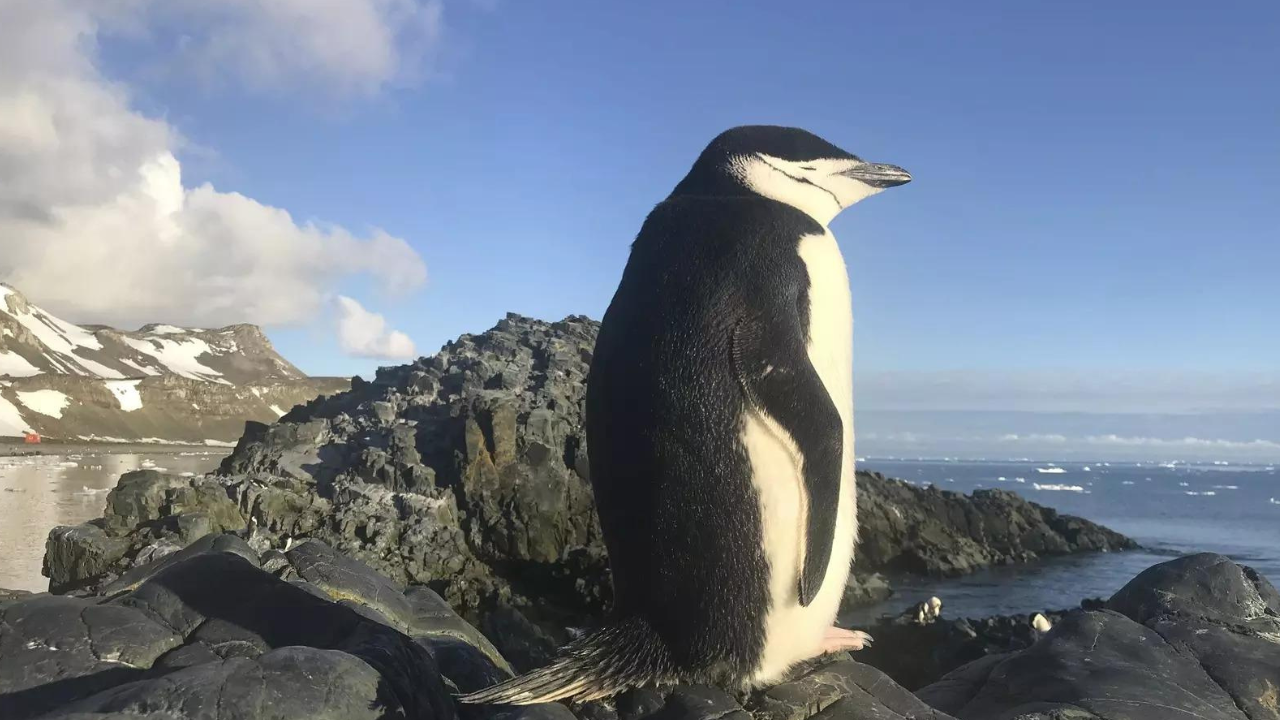Penguins take thousands of naps every day, each about a few seconds long - Times of India
 [ad_1]
[ad_1]

Penguins are champion power nappers. Over the course of a single day, they fall asleep thousands of times, each bout a few seconds long, a new study has found. Although animals have a wide range of sleeping styles, penguins easily take the record for fragmented sleeping. “It’s really unusual,” said Paul-Antoine Libourel, a neuroscientist at the Neuroscience Research Centre of Lyon in France who helped make the discovery.“This just highlights the fact that we don’t know much about sleep, and all animals are not sleeping like the way we read in textbooks.” The study was published on Thursday in the journal Science.
The science of sleep got its start in the early 1900s when researchers used scalp electrodes to discover that people produce slow brain waves when dozing. They found similar wave patterns in mice, pigeons and other captive animals. Over time, scientists discovered that pretty much every animal they studied spent some time each day unresponsive to their environment. Even jellyfish sleep despite the lack of a brain. But how animals sleep varies a lot. Brown bats remain asleep for 20 hours a day, whereas giraffes get by on less than two hours. Human brains shut down entirely when we sleep, while seals can shut down a single side; with the other still awake, they can continue to swimas they doze.
In 2019, Dr. Libourel and his colleagues tracked sleeping animals in King George Island, just 70 miles north of Antarctica. The researchers outfitted the penguins with electrodes and other sensors that recorded their activity for up to 11 days. The birds split their time between swimming in the ocean and staying at the nests to keep their eggs and chicks warm. Between each trip to sea, which took around nine hours, the penguins spent 22 hours, on average, taking turns caring for their young. While in the ocean, the birds barely slept, spending just 3% of their time resting on the surface of the sea, the study found. When the penguins returned to their nests, their brain waves slowed to a pattern that is typical for sleeping birds — but only for a few seconds. They woke up again, only to fall back asleep. The birds sped through this cycle 600 times in an hour.
Humans, too, can experience this sort of microsleep, though typically only after fa iling to get a good night’s rest. It can be dangerous, especially if we’re nodding off at the wheel of an automobile.
Dr. Libourel speculated that penguins’ sleep patterns reflect the extreme conditions where they doze. Penguin colonies are noisy and crowded. The habitats are also dangerous: At any moment, a gull-like bird called a brown skua may dive at a nest and eat eggs or chicks. The fact that penguins manage to sleep so much despite all these disturbances suggests to Dr. Libourel that the microsleep provides some essential benefit.
[ad_2]
Source link
https://worldnews2023.com/top-stories/penguins-take-thousands-of-naps-every-day-each-about-a-few-seconds-long-times-of-india/?feed_id=281186&_unique_id=65dca8cbadafd
The science of sleep got its start in the early 1900s when researchers used scalp electrodes to discover that people produce slow brain waves when dozing. They found similar wave patterns in mice, pigeons and other captive animals. Over time, scientists discovered that pretty much every animal they studied spent some time each day unresponsive to their environment. Even jellyfish sleep despite the lack of a brain. But how animals sleep varies a lot. Brown bats remain asleep for 20 hours a day, whereas giraffes get by on less than two hours. Human brains shut down entirely when we sleep, while seals can shut down a single side; with the other still awake, they can continue to swimas they doze.
In 2019, Dr. Libourel and his colleagues tracked sleeping animals in King George Island, just 70 miles north of Antarctica. The researchers outfitted the penguins with electrodes and other sensors that recorded their activity for up to 11 days. The birds split their time between swimming in the ocean and staying at the nests to keep their eggs and chicks warm. Between each trip to sea, which took around nine hours, the penguins spent 22 hours, on average, taking turns caring for their young. While in the ocean, the birds barely slept, spending just 3% of their time resting on the surface of the sea, the study found. When the penguins returned to their nests, their brain waves slowed to a pattern that is typical for sleeping birds — but only for a few seconds. They woke up again, only to fall back asleep. The birds sped through this cycle 600 times in an hour.
Humans, too, can experience this sort of microsleep, though typically only after fa iling to get a good night’s rest. It can be dangerous, especially if we’re nodding off at the wheel of an automobile.
Dr. Libourel speculated that penguins’ sleep patterns reflect the extreme conditions where they doze. Penguin colonies are noisy and crowded. The habitats are also dangerous: At any moment, a gull-like bird called a brown skua may dive at a nest and eat eggs or chicks. The fact that penguins manage to sleep so much despite all these disturbances suggests to Dr. Libourel that the microsleep provides some essential benefit.
Comments
Post a Comment